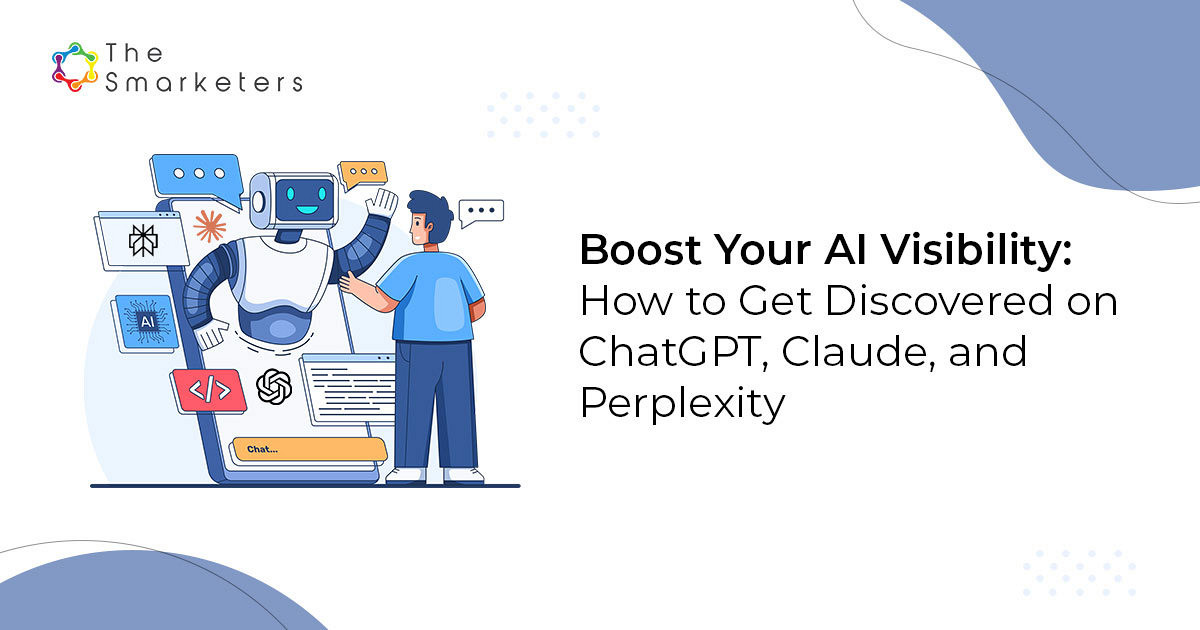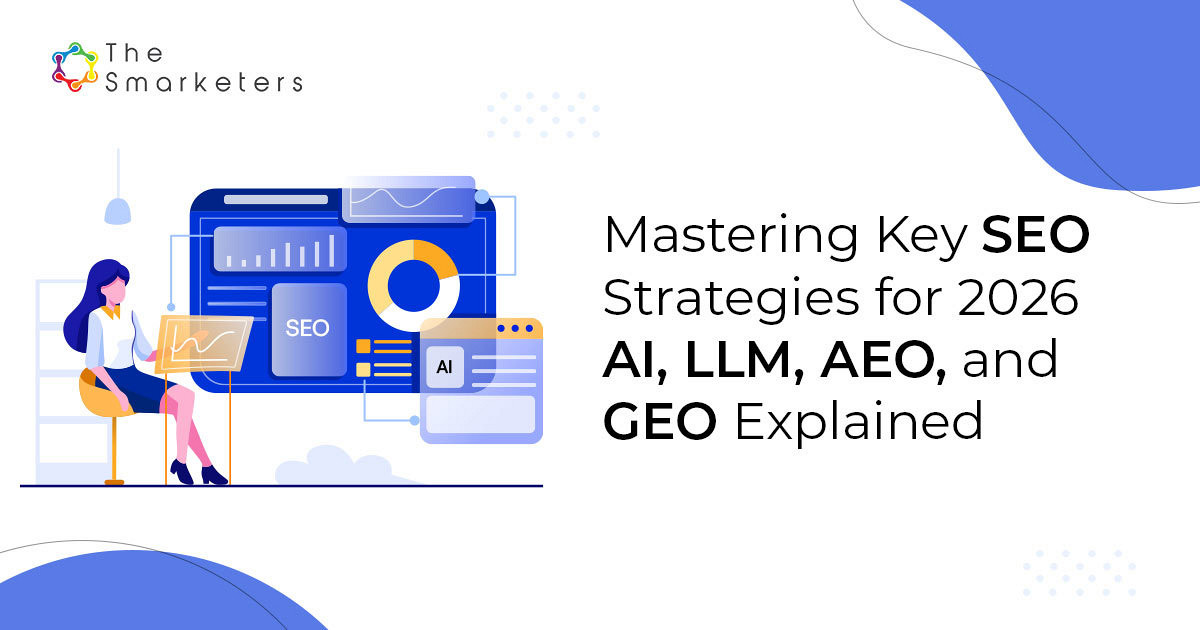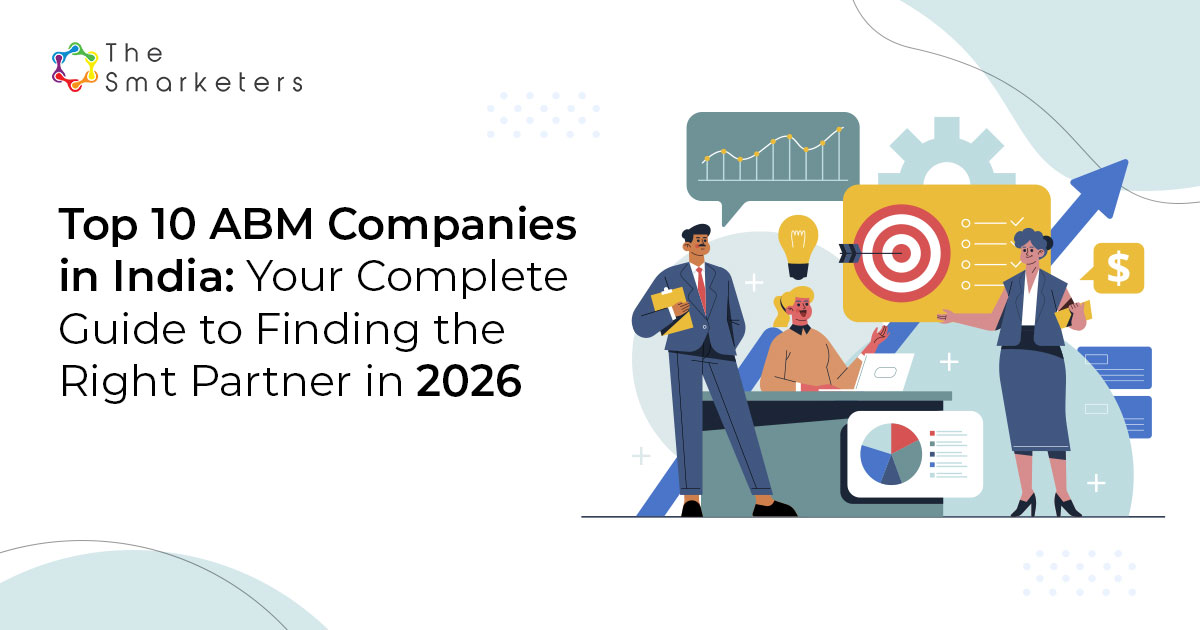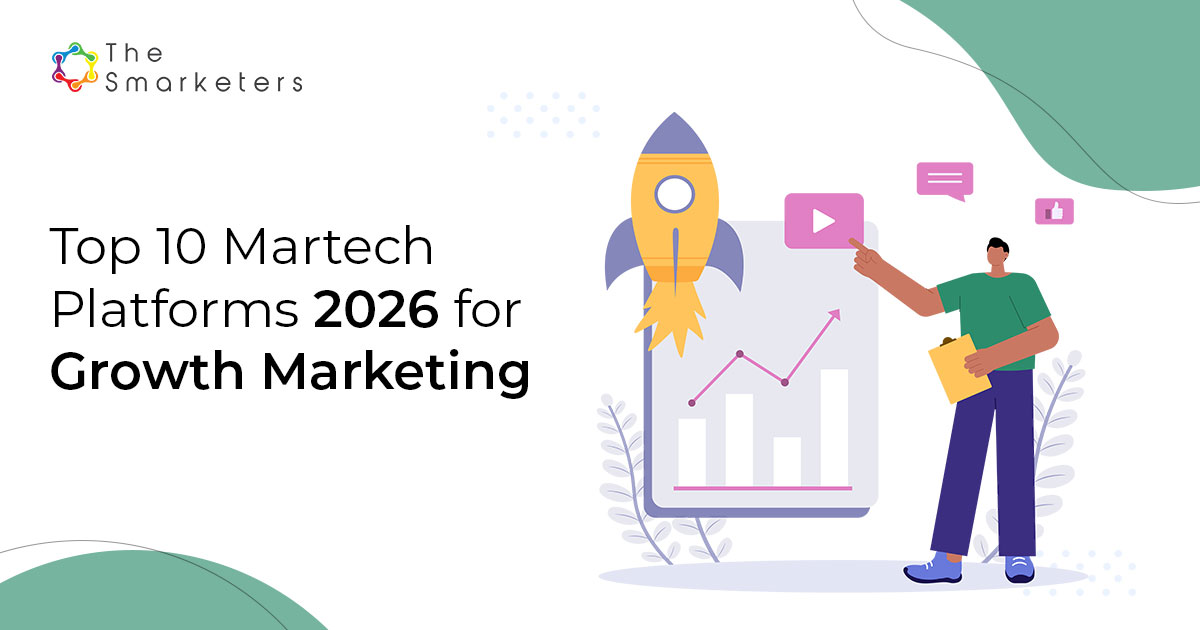Table of Contents
- Boost Your AI Visibility: How to Get Discovered on ChatGPT, Claude, and Perplexity
- Mastering Key SEO Strategies for 2026: AI, LLM, AEO, and GEO Explained
- Answer Engine Optimization (AEO): Creating FAQ and Conversational Content for AI
- Content Revamp: How Updating Old Content Boosts Performance with LLMs
- The complete guide to Generative Engine Optimization for B2B Companies
The dynamics of digital marketing have irrevocably changed. Continuing to rely on traditional Search Engine Optimization (SEO) as your sole visibility driver is akin to optimizing for an environment that no longer exists. The path to sustainable brand authority and lead generation now runs directly through Artificial Intelligence.
The mandate for every B2B marketer is clear: your strategy must evolve beyond SEO to encompass Answer Engine Optimization (AEO) and Generative Experience Optimization (GEO).
The objective is not merely to capture clicks, but to ensure that Large Language Models (LLMs) and AI systems can easily comprehend, trust, and ultimately cite your organization’s content within AI-generated summaries and conversational interfaces. This is the new metric of success—machine citation authority.
Below is the definitive, action-oriented roadmap for transitioning your content and technical architecture to thrive in this new generative economy.
Priority Action Matrix: The 6 Strategic Imperatives for AI Visibility
To establish visibility in AI Overviews (AIO) and conversational search, your content creation and optimization efforts must strategically pivot toward structured, authoritative answers. The following six areas represent your highest priority for immediate implementation.
| Priority Focus Area | Actionable Strategy | Strategic Benefit (How it Helps) |
|---|---|---|
| 1. Direct Answer Optimization (AEO) | Place concise, unambiguous answers (40–60 words) immediately after H2/H3 headings or questions. | Captures AI Overviews and Featured Snippets; satisfies conversational intent, driving high-quality visibility. |
| 2. Comprehensive Schema Markup | Implement JSON-LD for Organization, Article, FAQ, and HowTo schemas across all key pages. | Enables LLMs to understand content entities reliably; increases citation probability and trust in AI summaries. |
| 3. E-E-A-T Reinforcement | Provide clear author credentials, cite reputable sources, and back all points with concrete data/stats. | Builds machine trust and credibility; content is preferred by AI for factual sourcing and is resilient against quality updates. |
| 4. Foundational Technical Health | Optimize Core Web Vitals (CWV) and ensure clean HTML/DOM structure and proper heading hierarchy. | Maintains foundational crawlability and indexability; ensures AI models can efficiently extract target answers. |
| 5. Strategic Topical Clustering (GEO) | Organize content around pillar pages supported by deep sub-topic clusters with strong internal linking. | Signals broad topical authority and comprehensive coverage, maximizing brand visibility in complex generative searches. |
| 6. Conversational Content Design | Expand optimization to natural language questions, long-tail queries, and mobile/voice contexts. | Captures context-based modern searches (voice assistants, chatbots) and prepares content for emerging agentic interfaces. |
Section I: Defining the Generative Search Ecosystem

The acceleration of AI integration (e.g., Google’s SGE) requires a sophisticated, three-part strategy where SEO provides the technical foundation, and AEO/GEO provide the amplification.
1.1. The Strategic Shift: SEO, AEO, and GEO
- Traditional SEO: The Technical Precondition. This is your technical foundation. It ensures the website is sound, crawlable, and discoverable. Without this strength, your valuable content is invisible to the AI models that could leverage it.
- AEO (Answer Engine Optimization): The Amplifier. AEO optimizes content specifically for direct answers—featured snippets, AI Overviews, and voice search answers. Its primary goal is machine comprehension and utilization, often prioritizing the quick answer experience over the initial click.
GEO (Generative Experience Optimization): The Multi-Channel Strategy. GEO takes a macro view, focusing on enhancing how content is utilized by all generative AI models—including Google SGE, ChatGPT, and conversational interfaces. GEO is vital for expanding visibility across text, images, and video in AI-generated formats.
1.2. The Citation Paradox and New Metrics
AI Overviews profoundly change success metrics. Users now obtain complete answers upfront, leading to noticeably decreased Click-Through Rates (CTR) for traditional organic listings, especially for informational queries.
This strategic paradox dictates that success must pivot from maximizing raw traffic volume to achieving high machine citation authority. Being cited prominently in the Overview is the new measure of success, capturing attention and building authority even without the traditional #1 organic rank.
New Metrics of Success in the AI Era:
B2B marketing KPIs must now supplement traditional rankings and page views with measures of machine interaction:
- AI Visibility Score: A comprehensive metric tracking how often and prominently content appears in AI-generated summaries.
- Citation Count & Share of Voice: Measuring how frequently AI models explicitly cite the website as a factual source—a direct measure of brand authority within the AI ecosystem.
- Traffic from AI Referrals: Monitoring new referral sources that indicate traffic originated directly from complex AI interactions, demonstrating the tangible impact of AEO efforts.
Section II: Technical Foundations for LLM Comprehension
Technical SEO is a critical enabler of AI comprehension. If the machine cannot read your content efficiently, it cannot accurately summarize or cite it. Technical readiness is the essential enablement layer for content authority.
2.1. Architecting for the Machine
LLMs require structured, logical formats to extract insights.
- Logical Heading Hierarchy: Your site structure must provide a clear blueprint for AI comprehension. Utilize a single, clear H1 that sets context, followed by logically nested H2s and H3s that establish flow and concept relationships. Signaling that everything is equally important (e.g., using multiple H1s) severely hinders the AI's ability to prioritize key passages.
- DOM Pruning and Clean HTML: A highly optimized AEO strategy demands meticulous attention to the underlying code. Reducing DOM bloat—pruning hidden divs and minimizing code complexity—is crucial. This ensures the target answer is visible and accessible early in the raw HTML, facilitating efficient passage-level retrieval by LLMs.
- Crawlability and Indexability: Foundational SEO health is non-negotiable. Ensure robots.txt is correct, the XML sitemap only contains indexable URLs, & fix all no index tags.
2.2. The Critical Role of Structured Data (Schema Markup)
Structured data acts as the critical bridge, translating human-readable content into an interpretable language for AI systems. It functions as a comprehensive submission of content expertise to the entire AI assistant ecosystem (ChatGPT, Claude, etc.), helping them trust and utilize the content as a factual source.
- Implementation Focus: JSON-LD: The industry standard for AI-friendly content is JSON-LD. This format is lightweight, machine-readable, and optimized for AI training, chatbots, and reliable content categorization.
- Priority Schema Types for AEO/GEO: Optimization must prioritize schema types that facilitate direct answers and entity recognition, creating comprehensive entity relationships that AI systems can confidently parse:
- FAQ/How-To Schema: Directly structures content into question-answer or step-by-step formats, maximizing the chance of being used in AI Overviews.
- Organization/Person Schema: Establishes clear entity recognition and author attribution, supporting E-E-A-T verification.
- Article/Product/Service Schema: Provides explicit context for AI summarization or product recommendations.
- Helper Tools: Leverage tools like Twaino (Merkle's Schema Markup Generator), Google's Rich Results Tester, and JSON-LD editors to simplify implementation.
2.3. Technical E-E-A-T: Core Web Vitals (CWV)
Generative AI prioritizes quality and reliability. Websites must deliver a fast, smooth, and user-friendly experience, reinforcing the importance of Core Web Vitals (CWV).
- Performance Mandate: High scores for Largest Contentful Paint (LCP), First Input Delay (FID), and Cumulative Layout Shift (CLS) signal a high "technical E-E-A-T" score, indicating to the AI that the source is reliable and high-quality for summarization.
- Practical Application: Prioritize optimizing LCP (server response time), FID (minimizing JavaScript blocking), and CLS (reserving space for media/ads).
Section III: Establishing Authority and E-E-A-T
AI systems require assurance of quality and expertise before they will cite a source. This authority, primarily measured through the quality benchmark of E-E-A-T (Expertise, Experience, Authoritativeness, Trustworthiness), is paramount for visibility.
3.1. Architecting Authority with Topic Clusters (GEO)
Scattered, keyword-focused content that produces isolated articles is ineffective for modern AI.
AI models evaluate relevance across broad, deep topical domains.

- The Cluster Structure: Organize content around a central pillar page that covers a broad subject, supported by deeply interlinked cluster pages exploring related subtopics.
- Strategic Benefit: This structure helps search engines and AI systems recognize comprehensive topical authority, aligning content structure with E-E-A-T guidelines. This holistic approach is essential for AI-driven search, which often involves passage-level retrieval across the full context of a subject.
3.2. The E-E-A-T Reinforcement Playbook
LLMs are designed to minimize inaccurate outputs; they prioritize content that minimizes factual risk.
The Data and Citation Imperative: Content must demonstrate reliability by backing points with concrete data, statistics, and verifiable facts. Analysis shows adding statistics and citations can improve AI visibility by 30% to 40%.
Credible Sourcing: Establishing trustworthiness requires transparent sourcing. Content must link out to authoritative external sources (research papers, industry reports) or quote industry experts. Furthermore, building brand authority includes active community participation and engagement.
Author and Entity Focus: Clearly signaling the Expertise and Experience of the content creator is non-negotiable. This involves using Person and Article schema to properly attribute authorship. When writing for LLMs, use precise language (e.g., "Our [Company Name] Platform") rather than vague language ("our tool") to facilitate proper entity recognition and reinforce brand authority.
3.3. Internal Linking as a Semantic Map
A strategic internal linking plan helps LLMs understand the relationship between content pieces and the organizational depth of coverage.
Semantic Anchor Text: The anchor text used must be descriptive, utilizing natural language and including semantically related terms. Avoid generic phrases like ‘click here’ or ‘learn more’ to establish granular topical relevance for the machine, supporting AEO objectives.
Section IV: The Answer-First Content Strategy (AEO Playbook)
AEO necessitates a complete reversal of traditional detailed exposition. To maximize the chance of citation in an AI Overview, content must be structured to provide a direct answer immediately, followed by the supporting detail.
4.1. The Direct Answer Imperative
Content structure must be optimized to provide AI models with concise, extractable blocks of information.
- Answer Upfront Formatting: Place a direct, complete, and unambiguous answer (ideally contained within 40 to 60 words) immediately after the question or relevant heading.
- Q&A Structuring: Design content around a question-and-answer format, using clear H2 or H3 headings formulated as explicit questions. This practice is enhanced by implementing dedicated FAQ sections and wrapping that content in FAQ schema markup.
- Meta Tag Optimization: Include the targeted question in your page's SEO title tag and meta description to signal relevance for conversational queries.
- Scannable Elements: Break information into highly scannable chunks, such as lists, numbered steps, bullet points, and tables, to facilitate easy parsing and extraction by answer engines.
4.2. Optimizing for Conversational Search
AEO adapts to evolving search behavior, which is moving away from short-tail text searches toward more conversational, context-based, and voice-activated queries.
- Target Natural Language Queries: The keyword strategy must be expanded to include the complete questions, natural phrases, and long-tail queries that users articulate when speaking to AI assistants.
- Content Freshness and Accuracy: Content must be actively maintained. Regular, proactive updates are necessary to maintain freshness, relevance, and accuracy, which supports the trustworthiness component of E-E-A-T in dynamic or time-sensitive topics.
4.3. Planning for Agentic Discovery
The rise of autonomous agents and agentic commerce protocols allows transactions to unfold entirely within conversational interfaces. This shift is part of the broader GEO strategy.
- Reinforcing Brand Identity: While optimizing data for agentic discovery (clean Product/Service schema), reinforce brand identity and human-centered storytelling within the content itself.
- Multimedia Integration: Publishing visual content (images, videos) that is correctly tagged and structured (e.g., using video schema) increases brand presence across various AI-generated summaries and interfaces.
Section V: Strategic Implementation and Future-Proofing
Achieving and maintaining AEO and GEO visibility requires a commitment to continuous monitoring and adaptability, as external AI platforms' indexing rules are subject to frequent, unannounced changes.
5.1. Testing, Tracking, and Iteration

- Manual Testing: Strategists must manually search on Google, voice assistants, and third-party AI chatbots (like ChatGPT and Perplexity) using relevant queries to see how frequently and accurately the brand’s information surfaces.
- Specialized Tool Utilization: Leverage emerging AEO/GEO tracking tools to monitor mention rates across various AI platforms and accurately measure the calculated "AI Visibility Score" and Citation Count.
- Conversion Tracking Reframing: Teams must track indirect conversion paths. Monitor new referral sources, recognizing that conversion and pipeline impact should increase even if raw traffic volume declines.
5.2. Strategic Conclusions and Recommendations
The transition from a keyword-centric SEO mindset to an AI-centric AEO/GEO mandate is the defining challenge of modern digital marketing. Success hinges on a unified strategy where technical precision enables qualitative authority, resulting in high-impact answers.
- Budget Alignment: Resources should be shifted away from low-intent keyword pursuit and invested heavily into technical audits (for Schema, CWV, and DOM cleanup) and expert content creation required to meet the high E-E-A-T standards demanded by AI fact-checking filters.
- The Ratification of SEO: The strategy confirms that SEO is not being replaced; it is being ratified as the essential technical scaffolding that makes AEO and GEO possible. An AEO strategy cannot succeed if it is built atop a weak technical foundation.
The brands that become fluent in both the language of the machine and the language of human trust will lead the citation economy.
FAQs
1.Is traditional SEO still necessary if AEO and GEO are the future?
Yes, absolutely. SEO is the foundational layer. It ensures your website is technically sound, crawlable, and discoverable. AEO and GEO are strategies that build upon a strong SEO base, leveraging that discoverability to expand your visibility into AI-driven and voice-first search environments.
2.What is the fundamental difference between AEO and GEO?
AEO (Answer Engine Optimization) focuses on winning direct answers and featured snippets within traditional search engines. GEO (Generative Experience Optimization) is a broader strategy that expands this concept into the entire AI ecosystem, ensuring your content is used in AI-generated summaries and responses across multiple platforms.
3.How can small businesses or niche B2B brands compete for AI visibility?
Small or niche businesses can compete effectively through strategic optimization and by establishing deep topical authority. In many cases, niche authority and precise, strategic content optimization will outperform larger competitors who are broadly focused but lack depth in a specific area.
4.What are the key metrics for measuring AEO and GEO success?
Success is measured by machine interaction, not just clicks. Key metrics include: AI Visibility Score (how often your brand appears in AI-generated answers), Citation Count (how frequently your content is cited as a source), and Share of Voice (your brand's visibility compared to competitors in AI results).
5.How important is content freshness for AI Overviews?
Content freshness is critical. AI tools are designed to provide the most current answers, particularly for dynamic or time-sensitive topics. Regularly updating and maintaining your evergreen content is necessary to continue meeting the AI's expectations around accuracy and authority.









